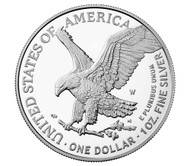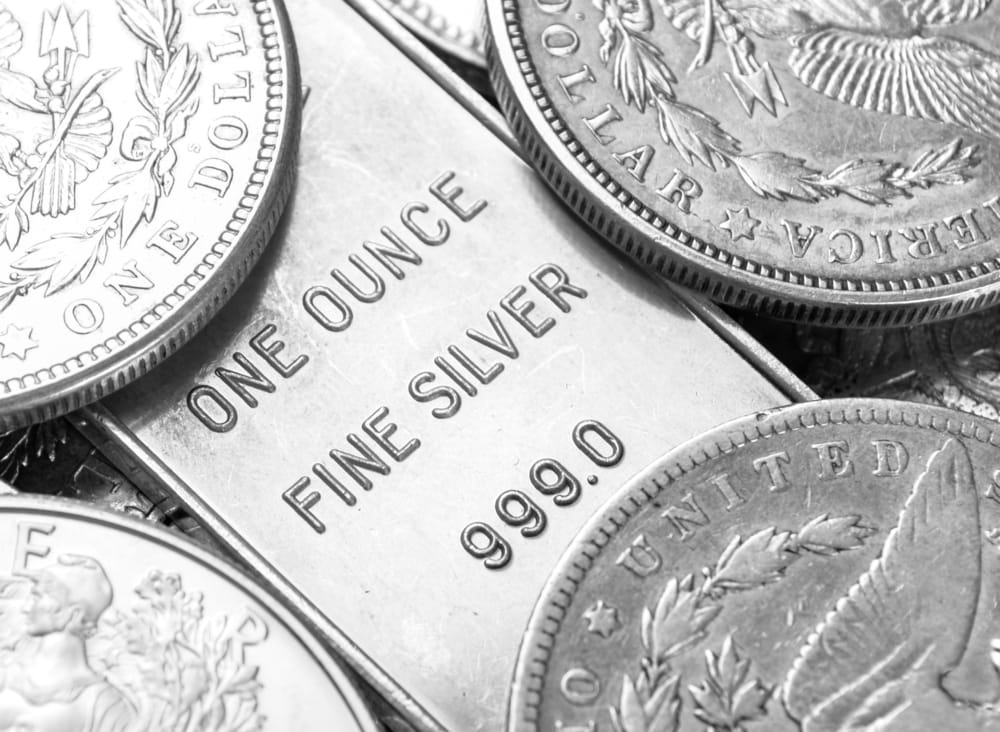The Silver Shortage and How It's Affecting You
Posted by Bullion Shark on May 25th 2021
The Silver Shortage and Spot Silver Price
Since the start of the pandemic in early 2020, there have been some amazing developments regarding silver bullion and the silver market – the wholesale and retail markets as well as investing in silver through ETFs, or Exchange Traded Funds.
After dipping in 2019, the combined demand from those who invest in silver bullion – whether for physical bars and coins, as well as activity in ETFs and futures trading – rose by 20% in 2020, and the increased level of demand has continued to increase in 2021.
And the majority of the increased demand for physical silver is occurring within the U.S. market (and in Germany to a lesser extent) with much of it concentrated in sales of the U.S. Mint’s American Silver Eagle bullion coins with sales and premiums up sharply for the entire period since early 2020. It also led the Mint to supplement its normal production on an emergency basis at Mints that do not normally make these coins.
ETFs
In February of this year silver holdings used to back ETFs reached a record-high of 1.2 billion ounces with the majority of that silver stored at vaults in London on behalf of major silver ETFs, especially SLV, whose custodians are big banks like HSBC and JP Morgan. The other major holdings are stored at the COMEX in New York and in China.
Over the course of just three days during that period, an unprecedented 110 million ounces of silver were added to those ETFs. This led to concern that if demand continued to rise at a similar pace for much longer, London would have run out of readily available physical silver.
In fact, the LBMA, or London Bullion Market Association, noted in a recent report that “it would only have been a matter of weeks before London’s existing stock was used up.” And in February SLV changed its prospectus to reflect this situation, saying that “the demand for silver may temporarily exceed available supply that is acceptable for delivery to the Trust, which may adversely affect an investment in the Shares.”
Social media frenzy
In February we also saw a widespread effort by followers of social media sites like Reddit to force a market squeeze in silver by purchasing all the physical silver they could get their hands on following a similar effort to drive up the price of shares of a company called Game Stop.
On the one hand, this did lead to a brief 8-year high in silver futures prices, which reached $30 per ounce, and also further exacerbated a shortage of physical supplies of silver coins and bars. It even led some major U.S. bullion dealers to temporarily halt sales of their silver products and led to sharp rises in premiums on available silver, which we have seen throughout the pandemic, including last spring when silver briefly hit a multi-year low around $12. But the only silver available was selling for around $18 an ounce.
On the other hand, the price of silver did not keep rising beyond $30 but dipped back to about $25 after the social media frenzy abated and is today about $27-28. This is because the majority of trading in silver takes place not in the physical market but in the paper future market based at the COMEX. Only a fraction of the contracts in the futures market is covered by physical silver held in the COMEX.
Investors in that market use contracts and leverage (or investing with borrowed money). If there were a serious supply squeeze, the COMEX could increase its margin requirements on leveraged investments, which would then force many people to sell off their positions to short sellers (those betting the contracts they sell will do so at a lower price).
Retail market
Demand for physical silver from the U.S. Mint rose 28% in 2020, and heavy buying has only continued this year. In part this is driven by concerns about volatility of financial markets, by rising expectations of inflation and by the commodity super cycle we are in that has seen many commodity prices rise.
Then there is the fact the major mints like the U.S. Mint have had to slow down production at its minting facilities even in the face of an explosion in demand because of the need to adhere to covid protocols. Plus, the Mint recently began producing new 2021, type 2 reverse American Silver and Gold Eagles at its West Point Mint and needed silver planchets for those new issues and the new, 2021-dated Morgan and Peace silver dollars. This has resulted in a shortage of silver planchets that led the Mint to limit production of the new silver dollars to respectively 175,000 Morgan and 200,000 Peace dollars.
This situation has in the words of Mint Director David Ryder left the Mint “between a rock and a hard place” as he said on May 4. He noted that in March 2021 sales of bullion coins at the Mint had risen 173% and that he appreciated the patience of Mint customers who have had to deal with production delays caused by increased demand and the changes to production procedures and schedules from the pandemic.
In particular, demand for Silver Eagles has been very strong since early 2020 and when combined with the backlog in production and rising silver prices, this has led to premiums continuing to remain very high by historic standards.
Mint sales of those coins have had to be sold on an allocated basis repeatedly during this period, limiting them to its network of major bullion companies. And all of these factors have increased delivery lead times too with retail buyers needing to wait longer than usual to receive their silver products.
Globally, demand for physical silver is estimated to have exceeded 200 million ounces for the first time in four years, according to that LMBA report. Demand for physical silver and spot prices are widely expected to remain strong in the coming months.



